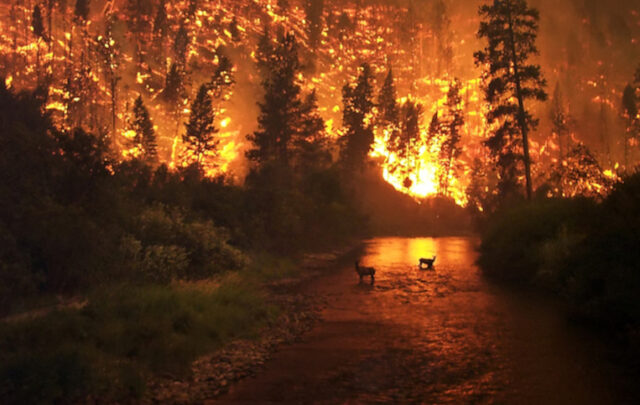CALGARY — Chinese demand for the Alberta oil sands — the second largest reserve of crude on the planet — puts the United States in the difficult position of balancing its commitment to open markets with its desire for secure supplies of energy, says Alberta’s new envoy to Washington.
“That’s exactly what the U.S. is wrestling with,” said Murray Smith, the former Alberta energy minister who begins work as the province’s representative in the U.S. capital next week. The question, which has been pondered quietly for several years, is likely to burst into the spotlight in 2005.
Enbridge Inc. is pushing ahead with a plan to build a $2.5-billion pipeline from Edmonton to the British Columbia coast, saying that the majority of the oil will probably head to China and that a Chinese company may take a 49-per-cent ownership stake in the line.
The line would carry about 20 per cent of the oil sands’ projected daily production in 2010 of two million barrels. At present, oil sands production is about one million barrels, with very little of it going to Asia.
The Chinese government is also said to be interested in buying Husky Energy Inc. of Calgary, which has one small oil sands project and is planning a large one.
“There would be some concerns [for the United States],” said Robert Ebel, head of energy studies at the Center for Strategic and International Studies in Washington, citing the possibility of having to pay more for foreign oil than it would have to pay to get it from Canada. “But, all in all, it would benefit the world market as a whole.”
Canada is the No. 1 exporter of crude oil and petroleum products to the United States, which is the world’s biggest importer and consumes a quarter of the planet’s daily production. China recently became the No. 2 importer, moving past Japan. In 2003, Canada produced 2.39 million barrels of crude a day, exporting almost two-thirds of that — 1.55-million barrels — to the United States.
Mr. Ebel said that while Chinese competition for a safe source of U.S. oil isn’t great news, the fact that China is diversifying its own supply is important, potentially making the global oil market more stable.
“It’s not necessarily a surprise that [China] would knock on Canada’s door and take a long look at the oil sands,” Mr. Ebel said. “Should we be concerned that some of that oil goes east instead of south? Probably not.”
A front-page story in The New York Times last week worried about Chinese interest in the oil sands and cited a U.S. Department of Energy spokesman who would say nothing more than that officials are monitoring the situation. The department did not return calls for comment this week.
Mr. Smith said he didn’t foresee extreme clashes between free markets and energy security, believing that Canada and the United States can find “business-like solutions.”
“If China were to enter into [the oil sands] as a competitor for supply, I think the model of free trade and [open] market access would hold,” Mr. Smith said, adding that it is better for Alberta to have two export markets rather than just one.
Competition for the oil sands could speed development of the resource as well, Mr. Smith said. Developing the projects is costly and difficult.
The oil sands — whose reserves of 174 billion barrels rank No. 2 in the world behind Saudi Arabia’s — have the attention of the White House. In 2001, U.S. Vice-President Dick Cheney’s National Energy Policy report said “their continued development can be a pillar of sustained North American energy and economic security.”
But Canada needs new markets, a government agency here says. In a 158-page report in May on the challenges and opportunities in the oil sands, the National Energy Board said the United States historically has absorbed any additional production of crude oil from Canada. But it concluded that “additional markets will be required to keep pace with oil sands expansion.”
China doesn’t have much refining capacity for the heavy oil such as that produced from the oil sands, but has significant plans to build new refineries.
“That’s one of the reasons why this is important to the Chinese right away,” said Patrick Daniel, Enbridge president and chief executive officer. “Before they start construction of those refineries, they want to know what the crude is going to look like. I think that’s one reason they’re particularly anxious to get under way. Everything has to fit together for them, the construction of refineries, the getting the tankers in place, and getting this pipeline in place.”
No refineries have been built in the United States since the 1980s and Canadian producers are hopeful they can push additional crude to new areas of the U.S., in addition to new markets such as China.
Greg Stringham, a vice-president at the Canadian Association of Petroleum Producers, said increased oil sands production will go south as well as east. “It’s probably not an either-or. It’s a which-first.”





